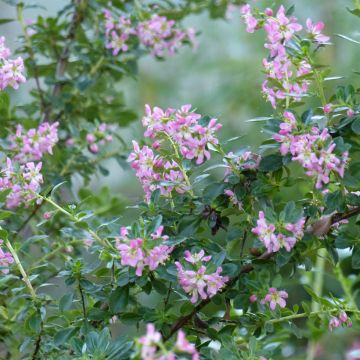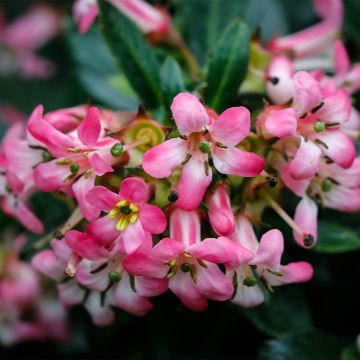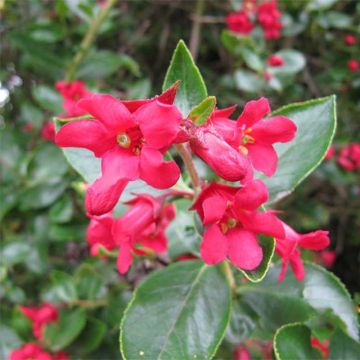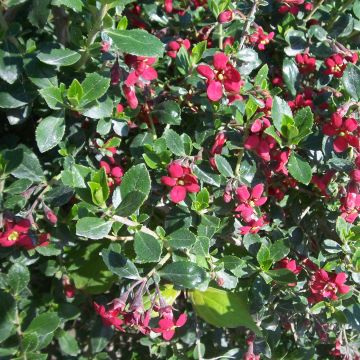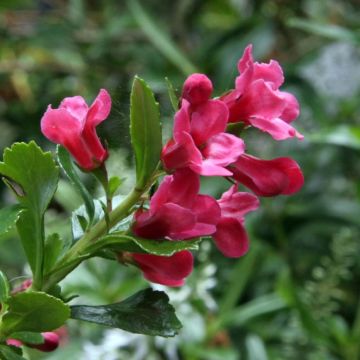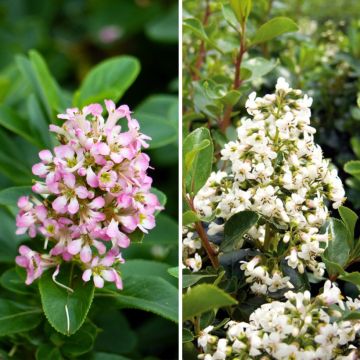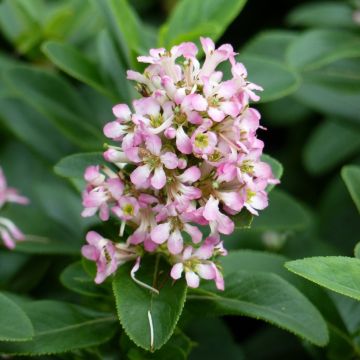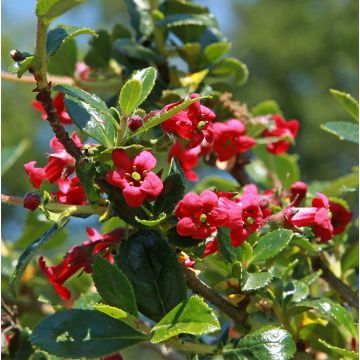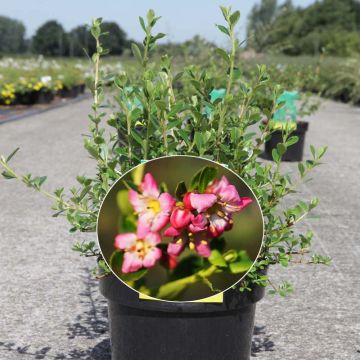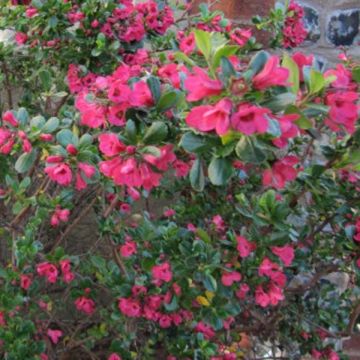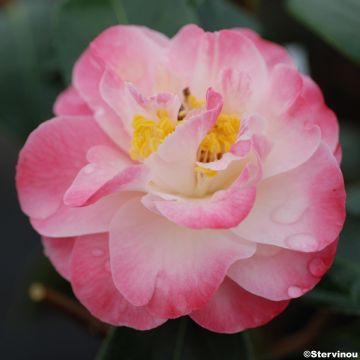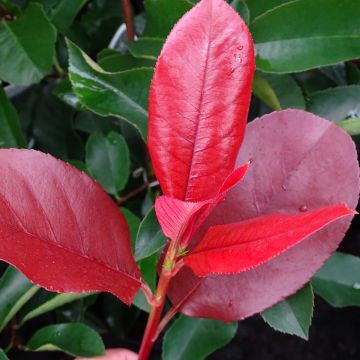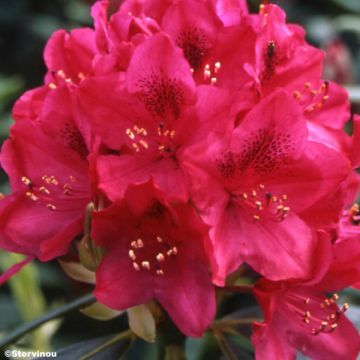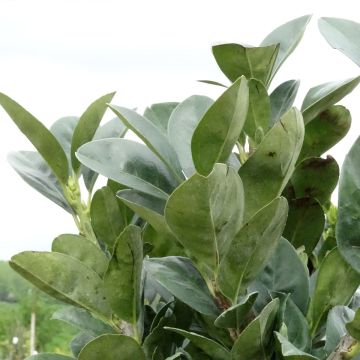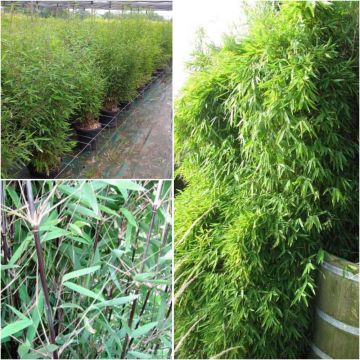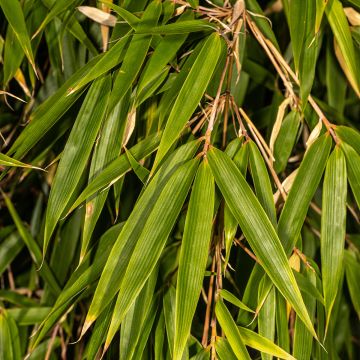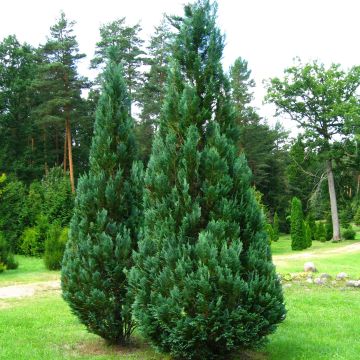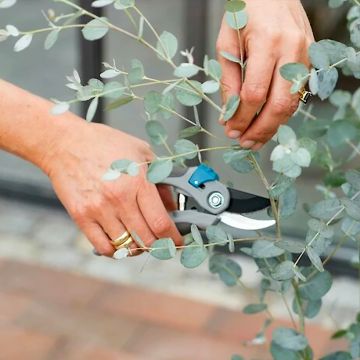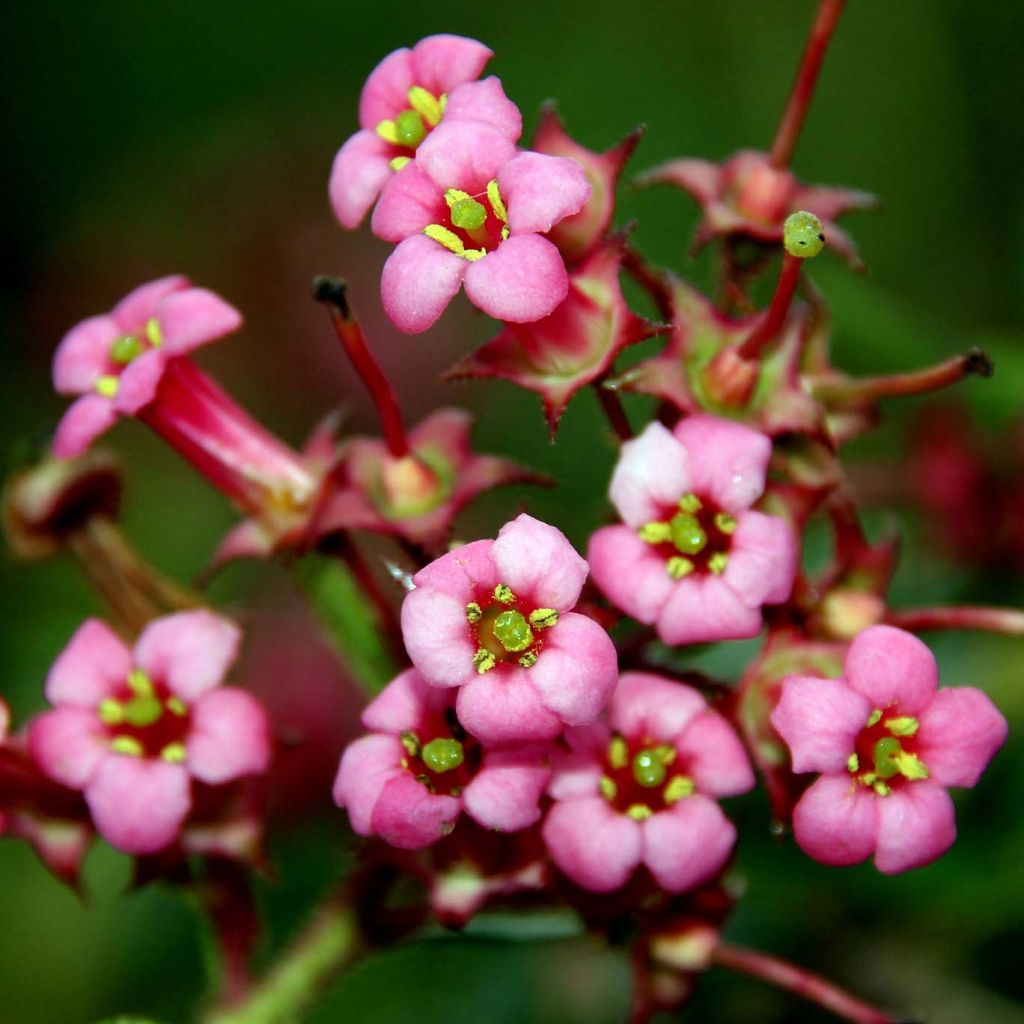

Escallonia rubra var. macrantha
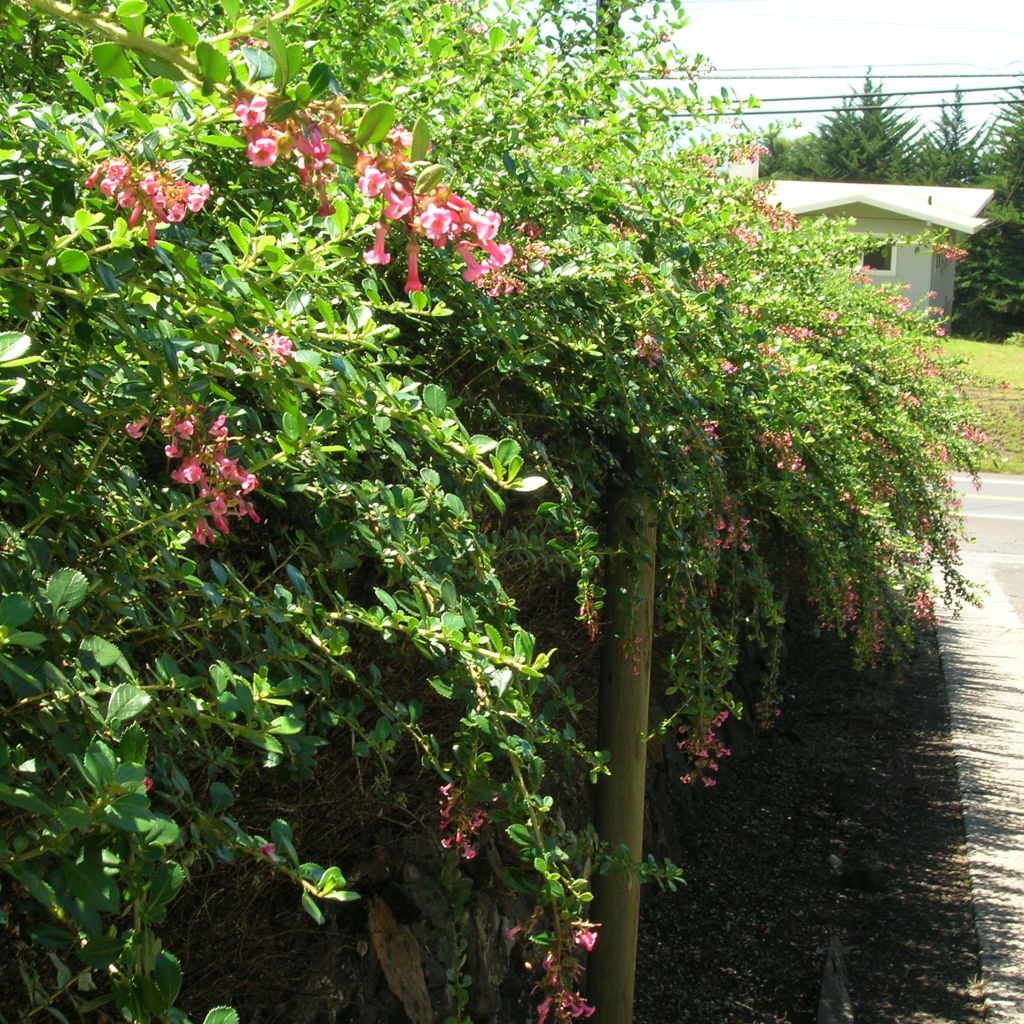

Escallonia rubra var. macrantha
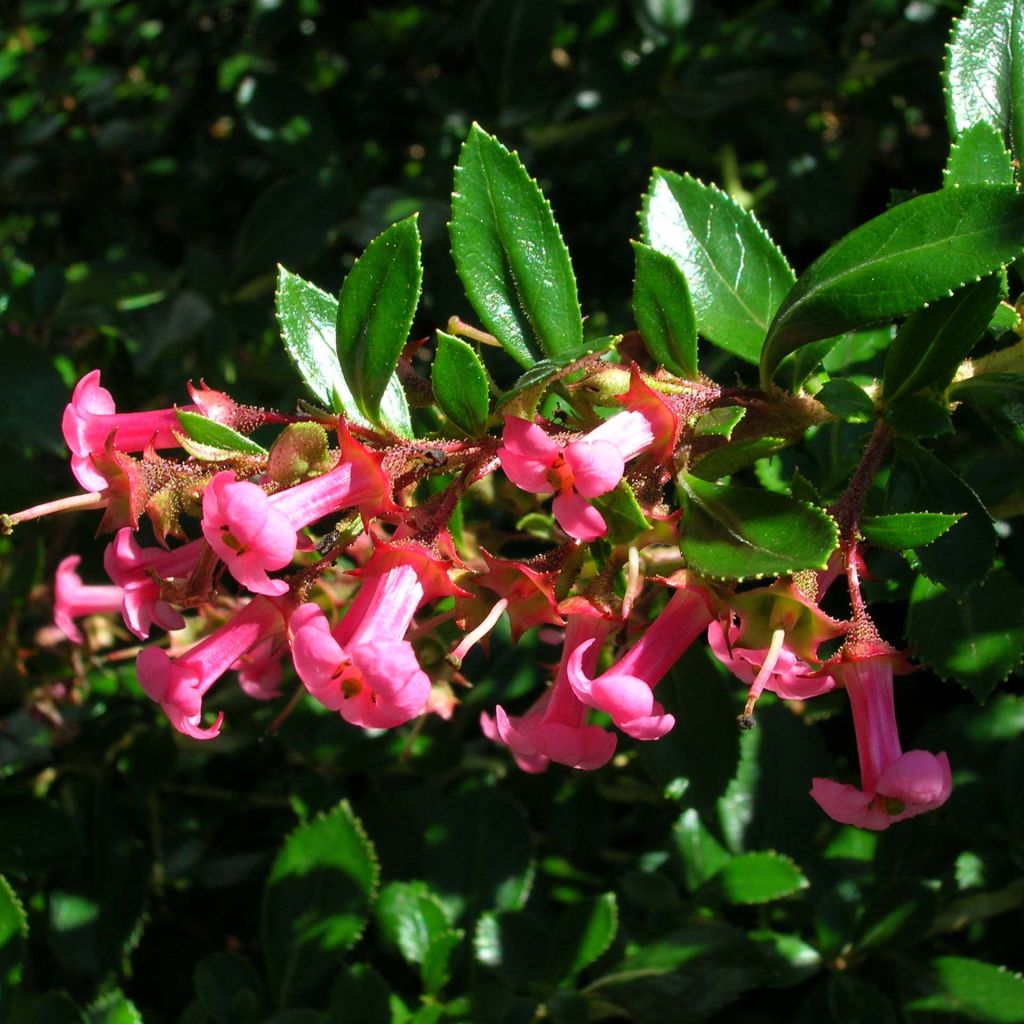

Escallonia rubra var. macrantha
Escallonia rubra var. macrantha
Escallonia rubra var. macrantha
Redclaws, Chilean Gum Box
This item cannot be shipped to the selected country
Delivery charge from €5.90
More information
Schedule delivery date,
and select date in basket
This plant carries a 24 months recovery warranty
More information
We guarantee the quality of our plants for a full growing cycle, and will replace at our expense any plant that fails to recover under normal climatic and planting conditions.
From €5.90 for pickup delivery and €6.90 for home delivery
Express home delivery from €8.90.

Does this plant fit my garden?
Set up your Plantfit profile →
Description
Escallonia rubra 'Macrantha' is a form of the native Escallonia rubra from Chile with large leaves and large flowers. This excellent evergreen hedge bush, whether left to grow freely or pruned, shows strong vigour and rapid growth, and provides long summer flowering in the form of tubular, fleshy bells, mostly a shining carmine pink colour, sometimes white or red. A vibrant colour enhanced by its fragrant, beautiful dark green foliage. Essential in coastal gardens, it loves the sun, prefers slightly acidic soils and tolerates partial shade in warm climates, sea spray, and summer drought once well established. Its only weakness is its poor hardiness, as it fails when winter temperatures drop below -10°C.
Escallonia rubra var. Macrantha is one of the many forms that the Escallonia rubra takes in its natural environment. The latter is a Chilean species extensively used in hybridization by horticulturists due to the extreme spontaneous variability of its habit, foliage, and flowering. The Macrantha form stands out from the species with its vigour and the large size of its flowers and leaves. All these plants belong to the family of escalloniacées. Botanical escallonias are all native to temperate areas of South America and Chile. The rubra species is widespread from Argentina to the extreme south of Chile, in the Andes Mountains up to 1500 m (4921 ft 4 in) altitude.
It is a naturally branching bushy shrub with an upright habit. Its flexible and woody climbing stems tend to arch over time. Prune regularly to densify the vegetation and maintain a beautiful habit. This vigorous plant will quickly reach an average size of 3 m (9 ft 10 in) in all directions. Its rather large leaves, from 3.5 to 8 cm (1.4 to 3.1 in) in length, are rounded, leathery, alternate, with irregularly dentate edges, shiny and fairly dark green. They are aromatic, have a succulent appearance, and are sometimes sticky. The flowering takes place from June-July to August-September, earlier or later depending on the climate, for at least two months. At the end of each branch, a cluster of 3 to 10 cm (1.2 to 3.9 in) is formed, composed of tubular bell-shaped flowers measuring up to 2.5 cm (1 in). They have a thick, waxy, shiny texture, and are white to deep pink or even crimson in some strains, enclosed at the base in a purple calyx.
Escallonia Macrantha is a superb evergreen hedge plant which only dislikes excessively chalky soils, icy winds, and cold winters. Well known to gardeners in Brittany, Ireland, or England, it is also comfortable in Mediterranean climates, after careful planting and regular watering for the first two or three years. In a hedge, it advantageously replaces conifers with its long-lasting flowering, decorative evergreen foliage, and natural resistance to diseases and parasites. It can be combined with many other shrubs (ceanothus, chalef, bay laurel, olearias, Griselinia, or even Eucalyptus in hedges), thus promoting biodiversity in the garden. It is essential in coastal gardens, as its flowering, like that of Olearias, brightens the foliage of Atriplex, Bupleurum fruticosum, or Correa alba rosea. In a large bed, it can be associated with large cistus, Phyllirea, Pistacia, Callistemons, Grevillea, or with spring-flowering shrubs such as lilacs, Kolkwitzia amabilis, Cassia, Leptospermum, or deutzias.
Report an error about the product description
Escallonia rubra var. macrantha in pictures
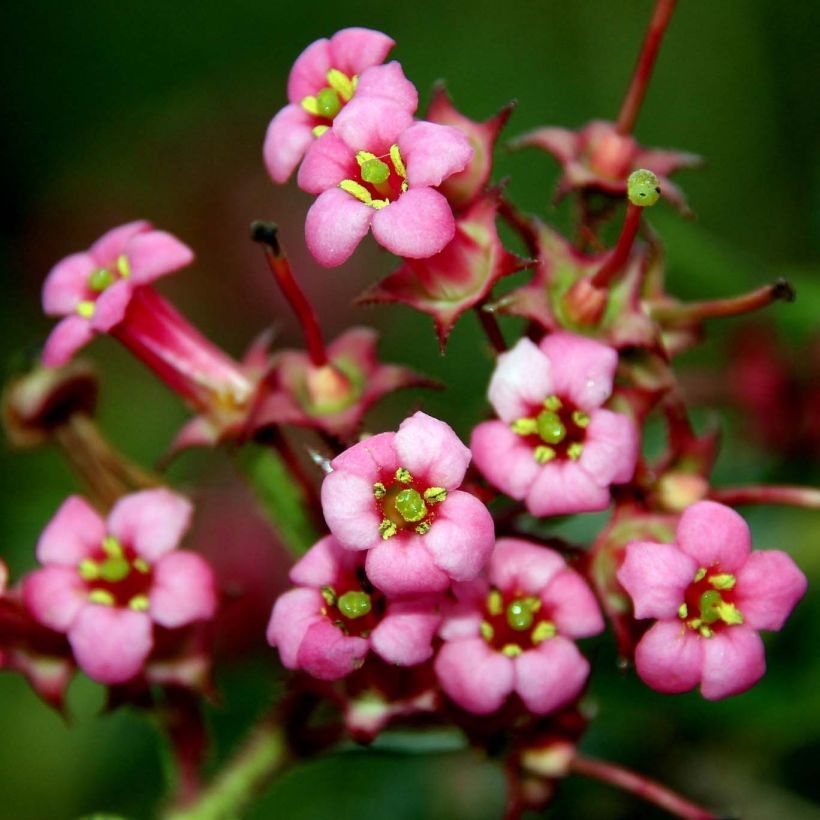

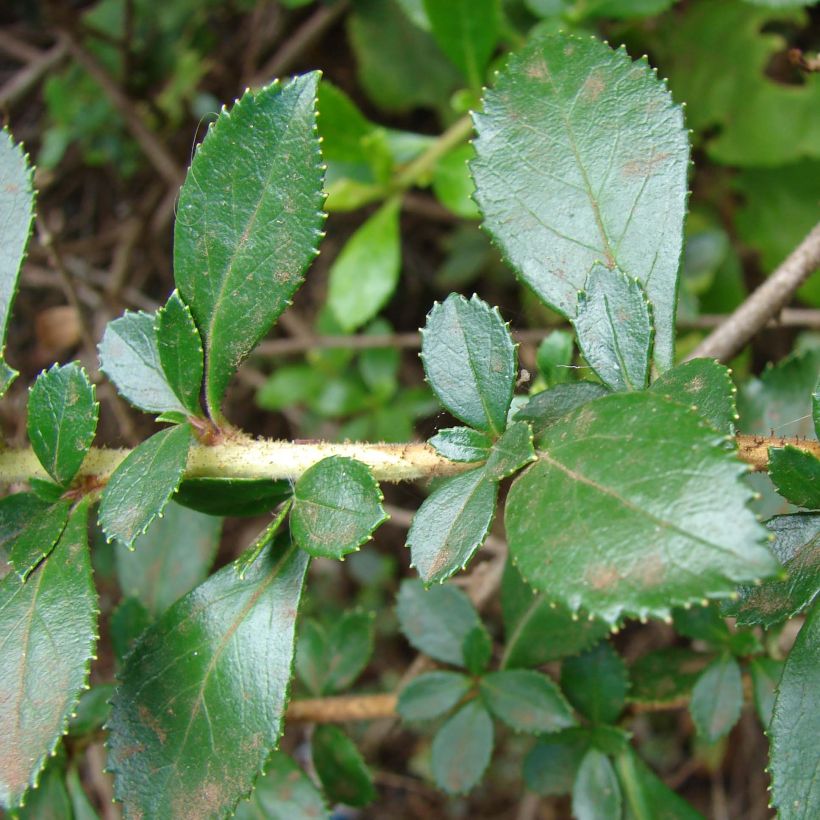

Plant habit
Flowering
Foliage
Botanical data
Escallonia
rubra var. macrantha
Escalloniaceae
Redclaws, Chilean Gum Box
South America
Other Escallonias
Planting and care
Escallonia rubra micrantha is best planted in spring, or in autumn in very mild climates. It requires well-drained, moist, slightly acidic, neutral, or even very slightly chalky soil, in a sheltered and warm location. It flowers more abundantly in the sun, but tolerates shadier exposures. Once well established, it requires no watering in summer, even in dry climates. It can withstand sea spray but not cold winter winds. You can apply a rose fertilizer in spring if your soil is very poor. Prune to balance the silhouette in February and September. It is sensitive to excessively chalky or heavy soils and dislikes stagnant humidity, especially in winter. If the soil is too heavy and chalky, it may suffer from chlorosis; if this is the case, apply a dose of sequestrene every year in spring. Prune the height by a third in the first few years during their establishment to give your bushes a dense and compact habit. You can also prune shorter in spring. In colder regions, protect from prevailing winds, south-facing against a wall or west-facing at the back of a bed or in a hedge, and mulch the base in winter. If your escallonia has frozen in winter, it is likely to regrow from the base in spring.
Planting period
Intended location
Care
-
, onOrder confirmed
Reply from on Promesse de fleurs
Evergreen shrubs
Haven't found what you were looking for?
Hardiness is the lowest winter temperature a plant can endure without suffering serious damage or even dying. However, hardiness is affected by location (a sheltered area, such as a patio), protection (winter cover) and soil type (hardiness is improved by well-drained soil).

Photo Sharing Terms & Conditions
In order to encourage gardeners to interact and share their experiences, Promesse de fleurs offers various media enabling content to be uploaded onto its Site - in particular via the ‘Photo sharing’ module.
The User agrees to refrain from:
- Posting any content that is illegal, prejudicial, insulting, racist, inciteful to hatred, revisionist, contrary to public decency, that infringes on privacy or on the privacy rights of third parties, in particular the publicity rights of persons and goods, intellectual property rights, or the right to privacy.
- Submitting content on behalf of a third party;
- Impersonate the identity of a third party and/or publish any personal information about a third party;
In general, the User undertakes to refrain from any unethical behaviour.
All Content (in particular text, comments, files, images, photos, videos, creative works, etc.), which may be subject to property or intellectual property rights, image or other private rights, shall remain the property of the User, subject to the limited rights granted by the terms of the licence granted by Promesse de fleurs as stated below. Users are at liberty to publish or not to publish such Content on the Site, notably via the ‘Photo Sharing’ facility, and accept that this Content shall be made public and freely accessible, notably on the Internet.
Users further acknowledge, undertake to have ,and guarantee that they hold all necessary rights and permissions to publish such material on the Site, in particular with regard to the legislation in force pertaining to any privacy, property, intellectual property, image, or contractual rights, or rights of any other nature. By publishing such Content on the Site, Users acknowledge accepting full liability as publishers of the Content within the meaning of the law, and grant Promesse de fleurs, free of charge, an inclusive, worldwide licence for the said Content for the entire duration of its publication, including all reproduction, representation, up/downloading, displaying, performing, transmission, and storage rights.
Users also grant permission for their name to be linked to the Content and accept that this link may not always be made available.
By engaging in posting material, Users consent to their Content becoming automatically accessible on the Internet, in particular on other sites and/or blogs and/or web pages of the Promesse de fleurs site, including in particular social pages and the Promesse de fleurs catalogue.
Users may secure the removal of entrusted content free of charge by issuing a simple request via our contact form.
The flowering period indicated on our website applies to countries and regions located in USDA zone 8 (France, the United Kingdom, Ireland, the Netherlands, etc.)
It will vary according to where you live:
- In zones 9 to 10 (Italy, Spain, Greece, etc.), flowering will occur about 2 to 4 weeks earlier.
- In zones 6 to 7 (Germany, Poland, Slovenia, and lower mountainous regions), flowering will be delayed by 2 to 3 weeks.
- In zone 5 (Central Europe, Scandinavia), blooming will be delayed by 3 to 5 weeks.
In temperate climates, pruning of spring-flowering shrubs (forsythia, spireas, etc.) should be done just after flowering.
Pruning of summer-flowering shrubs (Indian Lilac, Perovskia, etc.) can be done in winter or spring.
In cold regions as well as with frost-sensitive plants, avoid pruning too early when severe frosts may still occur.
The planting period indicated on our website applies to countries and regions located in USDA zone 8 (France, United Kingdom, Ireland, Netherlands).
It will vary according to where you live:
- In Mediterranean zones (Marseille, Madrid, Milan, etc.), autumn and winter are the best planting periods.
- In continental zones (Strasbourg, Munich, Vienna, etc.), delay planting by 2 to 3 weeks in spring and bring it forward by 2 to 4 weeks in autumn.
- In mountainous regions (the Alps, Pyrenees, Carpathians, etc.), it is best to plant in late spring (May-June) or late summer (August-September).
The harvesting period indicated on our website applies to countries and regions in USDA zone 8 (France, England, Ireland, the Netherlands).
In colder areas (Scandinavia, Poland, Austria...) fruit and vegetable harvests are likely to be delayed by 3-4 weeks.
In warmer areas (Italy, Spain, Greece, etc.), harvesting will probably take place earlier, depending on weather conditions.
The sowing periods indicated on our website apply to countries and regions within USDA Zone 8 (France, UK, Ireland, Netherlands).
In colder areas (Scandinavia, Poland, Austria...), delay any outdoor sowing by 3-4 weeks, or sow under glass.
In warmer climes (Italy, Spain, Greece, etc.), bring outdoor sowing forward by a few weeks.

































